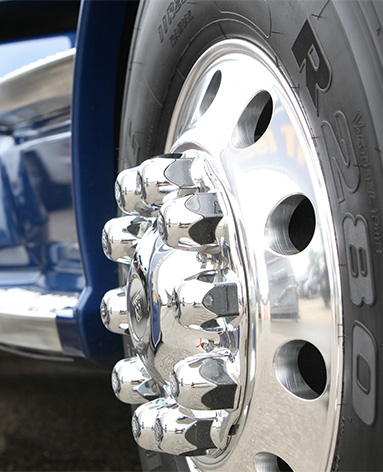Nov . 26, 2024 22:43 Back to list
Understanding the Function and Importance of Wheel Brake Drums in Vehicle Safety
Understanding Wheel Brake Drums Importance and Functionality
Wheel brake drums are critical components in many automotive braking systems, particularly those found in older vehicles and some heavy-duty trucks. Their design and functionality are pivotal for ensuring safety and driving performance. In this article, we will explore what wheel brake drums are, how they work, their advantages and disadvantages, and their maintenance.
What is a Wheel Brake Drum?
A wheel brake drum is a cylindrical component attached to a vehicle's wheel hub. It serves as the surface against which brake shoes press to slow down or stop the vehicle. When the brake pedal is engaged, hydraulic pressure is generated, pushing the brake shoes outward against the inner surface of the drum, creating friction. This friction is what slows the rotation of the wheel, ultimately bringing the vehicle to a stop.
How Does a Wheel Brake Drum Work?
The operation of a brake drum system is relatively straightforward. When you press the brake pedal, the brake fluid is directed from the master cylinder to the wheel cylinders located at each wheel. The fluid's pressure forces the pistons within the wheel cylinders to push the brake shoes outward against the brake drum. The contact between the shoes and the drum creates friction that slows down the rotation of the wheel.
This system is categorized as a drum brake system, which is less common in modern vehicles, as many have transitioned to disc brakes. However, drum brakes are still prevalent in applications requiring a durable braking solution, such as in rear brake systems of trucks and SUVs.
Advantages of Wheel Brake Drums
1. Cost-Effective Brake drum systems are often less expensive to manufacture and install compared to disc brakes, making them an attractive option for vehicle manufacturers and consumers trying to keep costs down.
2. Self-Adjusting Many drum brake systems include self-adjusting mechanisms that maintain the distance between the brake shoes and the drum, ensuring efficient braking performance over time.
3. Increased Surface Area Brake drums can offer a larger surface area for friction, which can provide strong braking power, especially under load. This feature is particularly useful in heavy-duty vehicles.
wheel brake drum

4. Less Prone to Water Damage Drum brakes tend to perform better in wet conditions compared to disc brakes, as the design helps prevent water from easily reaching the braking surface.
Disadvantages of Wheel Brake Drums
1. Heat Dissipation Drums can retain heat better than discs, which may lead to brake fade during prolonged use. This is particularly problematic in high-performance or heavy-load scenarios.
2. Weight Brake drums are typically heavier than disc brakes, contributing to a little additional weight in the vehicle that can affect fuel efficiency.
3. Complexity in Maintenance Maintaining drum brakes can be more challenging and messy than maintaining disk brakes due to the enclosed design. This can make inspecting and servicing them less accessible for DIY enthusiasts.
4. Limited Performance High-performance vehicles generally prefer disc brakes due to better heat dissipation and stopping power, meaning drum brakes might not meet the required performance standards in certain applications.
Maintenance of Wheel Brake Drums
Proper maintenance is essential to ensure that wheel brake drums function efficiently and safely. Regular inspections of the drum, shoes, and the entire braking system will help identify wear and potential issues early. Here are a few maintenance tips
- Inspect Brake Shoes Regularly check for wear and replace shoes if they are too thin. - Check Drum Condition Look for cracks, grooves, or signs of overheating on the drum surface. - Clean and Lubricate Keep the braking components clean from dust and debris and apply appropriate lubricants to moving parts. - Adjustments Ensure that the self-adjusting mechanism is functioning correctly to maintain optimal performance.
Conclusion
Wheel brake drums play an integral role in the braking system of many vehicles, particularly in specific applications where their advantages can be fully realized. While they have some disadvantages compared to more modern braking technologies, proper maintenance can help ensure their effectiveness and safety over time. Understanding how they work and the importance of routine care will contribute to a safer driving experience.
-
Scania Brake Drums: OEM Quality for Optimal Safety & Durability
NewsAug.16,2025
-
R.V.I: Advanced Remote Visual Inspection for Precision
NewsAug.15,2025
-
Discover HYUNDA: Innovative Vehicles, Equipment & Solutions
NewsAug.14,2025
-
R.V.I: Unlock Advanced Insights & Real-time Performance
NewsAug.13,2025
-
Kamaz Brake Drum: Durable & Reliable for Heavy Duty Trucks
NewsAug.12,2025
-
Heavy Duty Iveco Brake Drum - Premium Quality & Safety
NewsAug.11,2025
